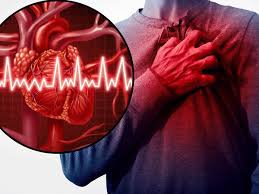Source:-outlookindia.com
Ischemia is a condition in which the blood-flow (specifically the oxygenated blood) is restricted or reduced in a part of the body. Cardiac Ischemia is the name for decreased blood flow and oxygen to the heart muscle. This is a heart problem caused by narrowed heart arteries, also known as coronary artery disease and coronary heart disease. This can ultimately lead to a heart attack. Ischemia often causes chest pain or discomfort known as angina pectoris.
Coronary heart disease (CHD) is a leading cause of death in Western countries and is also increasing steeply in developing countries. This is based on atherosclerotic process, which contributes to plaque formation (deposition of fat) in the inner layer of medium and large arteries. This further leads to arterial narrowing causes ischemia, which occurs initially with exertion but may eventually occur at rest. Atherosclerosis commonly begins in your childhood and slowly progresses throughout life due abnormal lifestyle. Angina pectoris is the main presenting symptom, as a result of ischemia. Angina is typically described as painful pressure, which can radiate to the neck, arms, back, and upper abdomen.
Contributing factors to the disease: smoking, Hyperinsulinemia/ diabetes, dyslipidemia, hypertension, family history, sedentary lifestyle, inflammation, stress, etc.
Diet remedies
Diet plays a pivotal role through the regulation of blood lipids and by influencing endothelial function and the underlying inflammation. Based on several studies it is being found that a low-fat plant-based diet, combined with regular exercise and a healthy overall lifestyle, can prevent, delay, and even reverse the progression of atherosclerosis, with subsequent reduction in cardiovascular disease. The key remedies include :
•Controlling dyslipidemia– Saturated fats, trans fats, and cholesterol in the diet increase concentrations of LDL cholesterol, while soluble fiber tends to reduce them. Controlling blood lipoprotein concentrations with a combination of diet, exercise, and medication is best option to follow.
•Controlling hypertension- High blood pressure is a major risk factor for CHD. Overall dietary and lifestyle changes helps in reducing total and LDL cholesterol.
•Controlling blood sugar levels- Diabetes is a major contributor of coronary disease and, in turn, CHD is a leading cause of death for people with diabetes.
•Improving antioxidant status- Dietary antioxidants, folate, magnesium, and other substances in foods may reduce the burden of LDL and improves endothelial function.
•Reducing inflammation- Inflammatory processes in atherosclerosis is increasingly apparent. Loss of excess body fat reduces C-reactive protein, an indicator of inflammation.
•Avoiding animal-fat and protein products– Dairy products, meat, and eggs are the primary sources of saturated fat and cholesterol which should be avoided. Low-fat plant-based diets are also highly acceptable to patients, provided they are prescribed along with basic diet instruction and support.
•Avoid hydrogenated and partially hydrogenated oils- They contain trans fats that increase LDL cholesterol and can reduce HDL cholesterol. Trans fatty acids act like pro-inflammatory marker similar to those of saturated fat and adversely affect vascular reactivity, reducing arterial flow-mediated dilation.
•Increasing fiber-containing foods- Soluble fiber mainly found in oats, barley, and beans, is particularly heart-friendly. Fruits and vegetables are also sources of soluble dietary fiber and pectin, and are associated with reduction in atherosclerotic progression.
